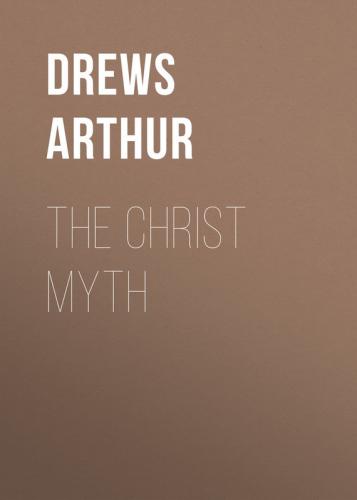132
Cf. Plutarch, “Artaxerxes,” ch. i.
133
Movers,
134
II. 9, 2.
135
Bousset, “Das Judentum,” 220.
136
1 Kings xi. 14
137
Schrader, “Die Keilinschriften u. d. A.T.,” 225.
138
Winckler,
139
Ep. viii. 3.
140
141
Ch. v. 1.
142
Gen. xxxv. 11–19; Deut. xxxiii. 12; Gen. xliv. 26.
143
Cf. Nork, “Realwörterbuch,” i. 240
144
The other famous “prophecy” supposed to refer to the birth of the Messiah, viz., Isaiah vii. 14, is at present no longer regarded as such by many. The passage obviously does not refer to the Messiah. This is shown by a glance at the text, and it would hardly have been considered so long as bearing that meaning, if any one had taken the trouble to read it in its context. Consider the situation. Queen Rezin of Syria and Pekah of Israel march against the Jewish King Ahaz, who is therefore much troubled. At the command of Jahwe the prophet goes to the king in order to exhort him to courage, and urges him to pray for a sign of the happy outcome of the fight. He, however, refuses to tempt God. Thereupon Isaiah himself gives him a sign. “Behold,” he says, “a virgin shall conceive and bear a son, and shall call his name Immanuel, God be with us. Before the child shall know to refuse the evil and choose the good, the land whose two kings thou abhorrest shall be forsaken.” And undisturbed by the fact that this prophecy for the moment can give but little encouragement to the king, Isaiah goes with the help of two witnesses(!) to a prophetess and gets her with child in order to make his words true(!). The text does not say in what relationship the woman stood to Isaiah. The Hebrew word Almah may mean “young woman” as well as “virgin.” The Septuagint, however, thoughtlessly making the passage refer to the Messiah, and having before its eyes very possibly the stories of the miraculous birth of the heathen Redeemer Gods, translates the word straightway by “virgin,” without thinking what possible light it thereby threw upon Isaiah.
145
Ch. lx. 1
146
Psa. lxviii. 32
147
Dupuis,
148
Matt. i. 14
149
The feasts of the Gods in question also correspond to this in character. They fell upon the solstice (the birthday or day of death of the sun), so far as their connection with the sun was emphasized. On the contrary, upon the equinoxes, so far as their connection with vegetation was concerned, sowing and harvest were brought into prominence. Usually, however, death and reappearance were joined in one single feast, and this was celebrated at the time in spring when day and night were of equal length, when vegetation was at its highest, and in the East the harvest was begun. Cf. Jeremias, “Babylonisches im N.T.,” 10
150
One should compare the description given by Hommel of the climate of Babylonia (
151
Dupuis has already pointed this out,
152
Macrobius, “Saturnal.,” i. 18, i. 34–35.
153
“Adversus Nationes,” v. 6 and 13.
154
Cf. Simrock, “Handbuch der deutschen Mythologie,” 4th ed., 1874, 201 and 225.
155
156
Frazer,
